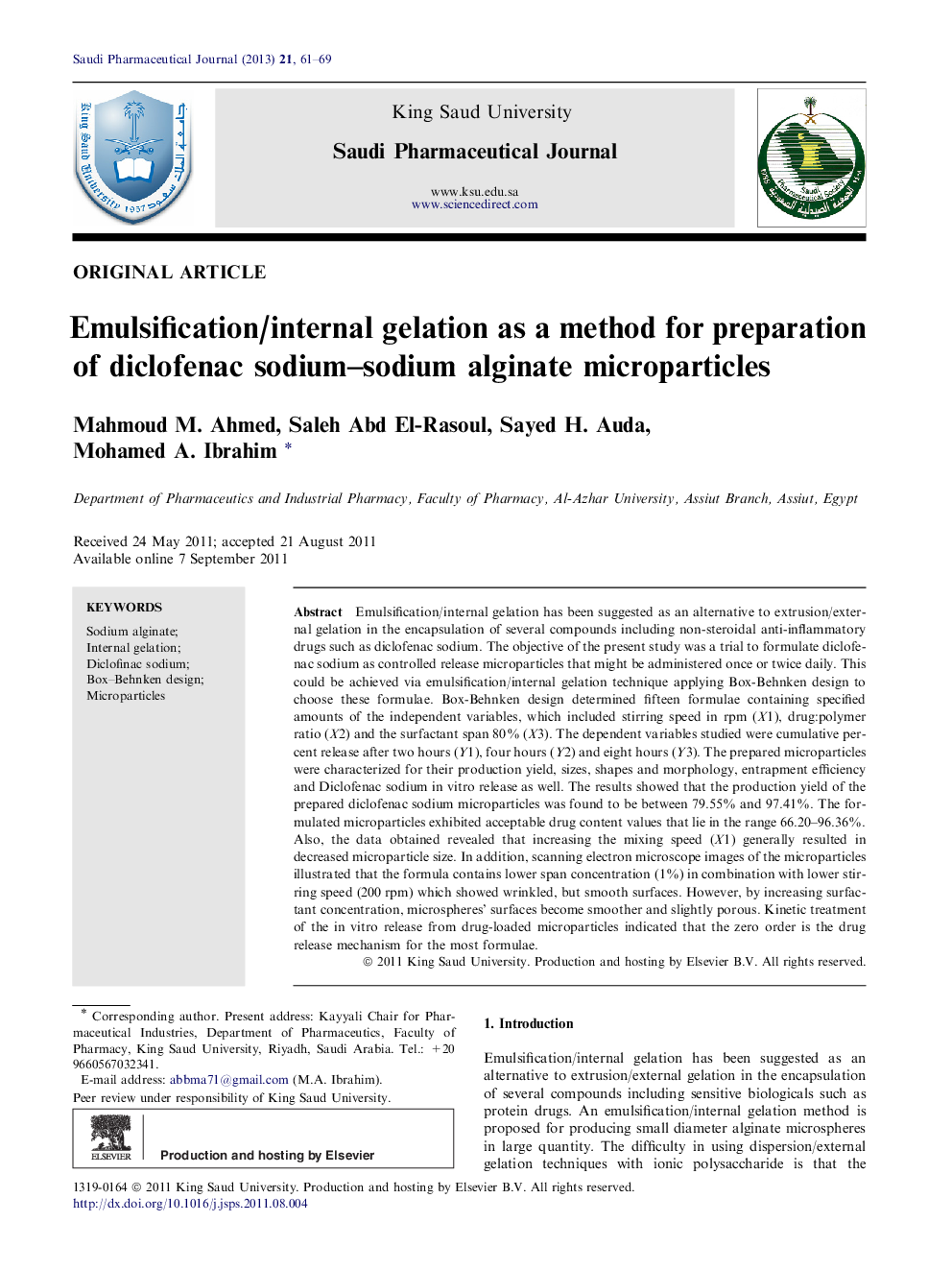| کد مقاله | کد نشریه | سال انتشار | مقاله انگلیسی | نسخه تمام متن |
|---|---|---|---|---|
| 2509627 | 1117676 | 2013 | 9 صفحه PDF | دانلود رایگان |

Emulsification/internal gelation has been suggested as an alternative to extrusion/external gelation in the encapsulation of several compounds including non-steroidal anti-inflammatory drugs such as diclofenac sodium. The objective of the present study was a trial to formulate diclofenac sodium as controlled release microparticles that might be administered once or twice daily. This could be achieved via emulsification/internal gelation technique applying Box-Behnken design to choose these formulae. Box-Behnken design determined fifteen formulae containing specified amounts of the independent variables, which included stirring speed in rpm (X1), drug:polymer ratio (X2) and the surfactant span 80% (X3). The dependent variables studied were cumulative percent release after two hours (Y1), four hours (Y2) and eight hours (Y3). The prepared microparticles were characterized for their production yield, sizes, shapes and morphology, entrapment efficiency and Diclofenac sodium in vitro release as well. The results showed that the production yield of the prepared diclofenac sodium microparticles was found to be between 79.55% and 97.41%. The formulated microparticles exhibited acceptable drug content values that lie in the range 66.20–96.36%. Also, the data obtained revealed that increasing the mixing speed (X1) generally resulted in decreased microparticle size. In addition, scanning electron microscope images of the microparticles illustrated that the formula contains lower span concentration (1%) in combination with lower stirring speed (200 rpm) which showed wrinkled, but smooth surfaces. However, by increasing surfactant concentration, microspheres’ surfaces become smoother and slightly porous. Kinetic treatment of the in vitro release from drug-loaded microparticles indicated that the zero order is the drug release mechanism for the most formulae.
Journal: Saudi Pharmaceutical Journal - Volume 21, Issue 1, January 2013, Pages 61–69